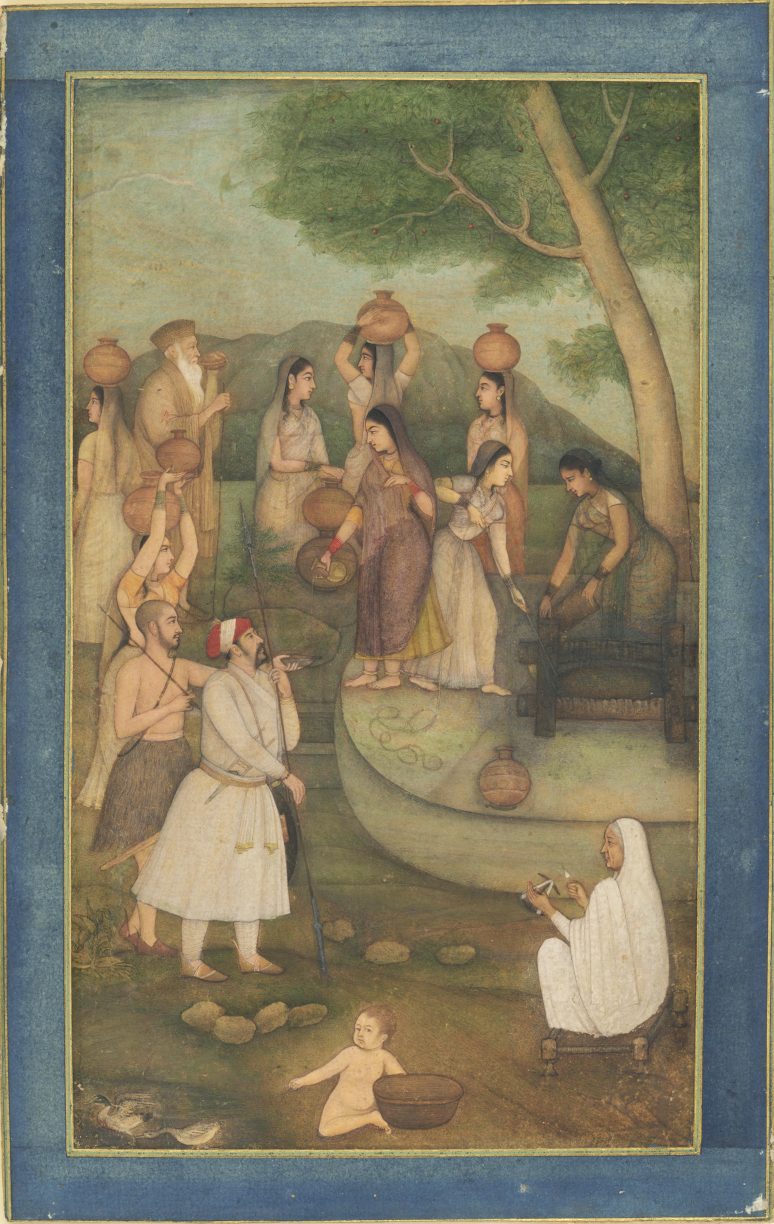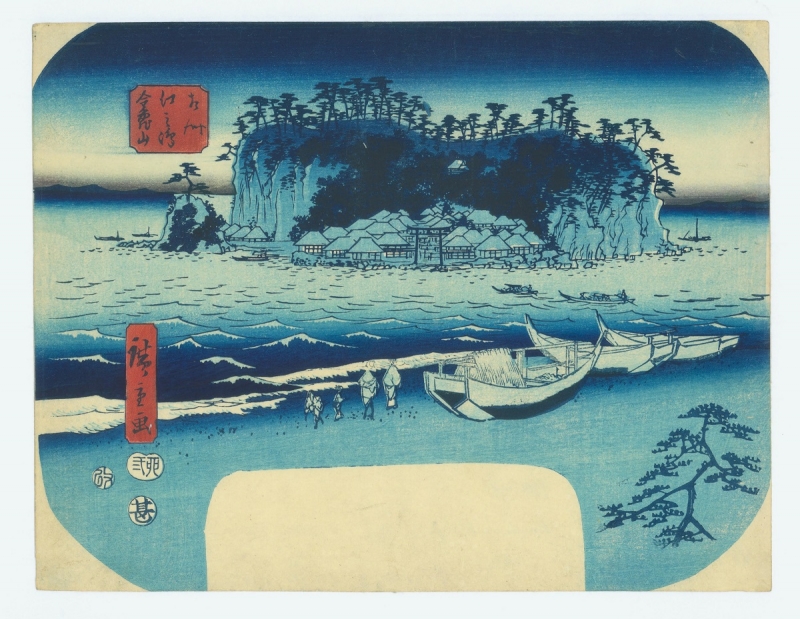
Women at the Well, Attributed to Mihr Chand, Mughal, Faizabad, Awadh, ca. 1765-70, Ink and opaque watercolor with gold on paper, 8 1⁄2 x 3 1/8 in. (20.5 x 13 cm.), courtesy of Kapoor Galleries
Provenance:
George Halla, Czech Republic consul to New South Wales, 1948.
Thence by descent.
Private collection, Sydney.
This masterful painting is an intriguing variant of a scene drawn from Indian literature and popularized in numerous 17th- and 18th-century Mughal paintings, that is, the chance encounter between a noble out hunting blackbuck and a comely village maiden at a well. Sparks of attraction fly as the man locks eyes with the woman pouring water to slake his thirst. The hunter, who is normally mounted and armed with a bow and arrow, pointedly relinquishes the physical advantage of his higher social station by having to reach up to the woman on the wellhead. In this iteration, however, that nobleman stands directly on the ground, holding only a long spear, and is accompanied by two unlikely fellow travelers: a mulla tendering a small covered bowl in his raised hand, and a tribal man with a shaved head, bare chest, and a grass lower garment. Surprisingly, it is the latter figure who reaches around the nobleman to extend a gourd-shaped cup to accept the gift of water, in effect displacing the customary romantic charge of village hospitality.
As usual, the woman pouring out refreshment is juxtaposed with two others hauling up water. Inventively, he assigns prominent positions in the composition to two other figures who bookend the panoply of village life: a naked, European-inspired toddler plunked down beside a basket and amusedly feeding a pair of ducks, and an old woman seated on a low stool passing time in spinning while she minds the infant. The exceptionally sensitive rendering of the dowager’s aged face and body is matched by the remarkably well-observed account of the utilitarian objects she holds – a spindle wound with cotton thread in her right hand and a wooden niddy-noddy supporting two skeins of thread in her left.
The only 18th-century artist skilled enough to begin to approximate the subtle sense of light and shadow, soft contours, muted palette, and stippled surface of the present painting is Mihr Chand (active ca. 1759-86), who worked for Nawab Shuja‘ al-Dawla and the Swiss adventurer Antoine Polier at Faizabad, the one-time capital of Awadh. Mihr Chand’s diverse artistic interests and high level of technical accomplishment allowed him to paint in a number of different manners, many of which feature hard-edged forms, pronounced shadows, and deep landscapes with low horizons. Others are conspicuously softer in style, as seen here in the faces of the nobleman and tribal figure.
By Dr. John Seyller
For more information, click here.
The recording of our webinar, The Color that Changed the World: The Impact of Blue in Asian Art is online

Utagawa Hiroshige (1797−1858), Kinkizan on Enoshima Island in Sagami Province (Sōshū Enoshima Kinkizan), Color woodblock print: aiban yoko-e uchiwa-e, 8⅞ x 11½ in. (22.5 x 29.2 cm), courtesy of Sebastian Izzard LLC Asian Art
The recording of our July 29th Zoom webinar, The Color that Changed the World: The Impact of Blue in Asian Art, a fascinating discussion by five expert panelists about this topic, is available to view on our website.
